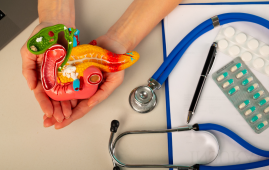

Based on new research from the University of Adelaide, the World Health Organization (WHO) has changed its guideline for malaria prevention mosquito nets.
Dr. Timothy Barker of the JBI Adelaide GRADE Center at the University of Adelaide led a team that demonstrated the efficacy o f a combination of insecticides in treating malaria preventing mosquito nets. PLOS ONE published the university’s systematic review.
Since 2005, pyrethroid insecticide-treated mosquito nets have been supplied in malaria prone areas around the world, however some mosquito populations have evolved resistance to the material.
“The number of malaria cases actually increased in 2020, whereas there was a continued and steady decrease in the number of malaria cases observed from 2000 to 2019,” said Dr. Barker.
“Given this, the WHO was interested in a new type of bed net that had been recently investigated in some clinical trials that might combat this issue.
“In order for any new recommendation for health care to be made, results from individual trials need to be systematically reviewed. As experts in research methodology, systematic reviews and the development of guidelines for recommendation, the WHO asked us to assist them in this process.”
Dr. Barker’s team examined the findings of randomized controlled trials done in the Republic of Benin, Burkina Faso, and Tanzania, where mosquitos were shown to be resistant to common insecticides. They discovered that mixing pyrethroid insecticide with chlorfenapyr increased its efficacy.
“Chlorfenapyr acts as a synergist to the pyrethroid insecticide by disrupting the mosquito’s ability to produce energy. This increases the ‘killing effect’ of the net with no additional harm to the person sleeping under it,” Dr. Barker explained.
The World Health Organization has amended its malaria recommendations to include nets treated with pyrethroid-chlorfenapyr as well as a less effective pyrethroid-pyriproxyfen combination. Sleeping under a mosquito net is one of the most effective ways to avoid mosquito bites, which spread malaria.
Malaria might threaten nearly half of the world’s population by 2021. In that year, there were an estimated 247 million illnesses and 619,000 deaths globally.
“To directly contribute to a recommendation that will prevent people from developing malaria, and subsequently reducing the number of people that may unfortunately die due to this terrible disease is something that I am extremely proud of,” Dr. Barker said.
“To do this work on behalf of the University of Adelaide, using the resources and skills that I have developed as both a student and researcher of this institution I believe is a testament to the international impact that our University can provide.”
more recommended stories
 How Soybean Oil Impacts Weight Gain and Metabolism
How Soybean Oil Impacts Weight Gain and MetabolismWhy Soybean Oil May Affect Metabolism.
 Coffee and Cognitive Function: Evidence Review
Coffee and Cognitive Function: Evidence ReviewA new narrative review in Cureus.
 Colorectal Cancer Screening Rates Low in Adults 45–49
Colorectal Cancer Screening Rates Low in Adults 45–49Recent UCLA research reveals that colorectal.
 Gut Immune Cells and Long-Lasting Antiviral Protection.
Gut Immune Cells and Long-Lasting Antiviral Protection.Breakthrough Findings on How Gut Immune.
 Mild Pancreatic Duct Dilatation Signals Higher Cancer Risk
Mild Pancreatic Duct Dilatation Signals Higher Cancer RiskEarly Structural Changes Offer Critical Clues.
 How the Uterus Senses Force During Labor: New Insights
How the Uterus Senses Force During Labor: New InsightsA new study published in Science.
 Fat-Free Mass and Brain Outcomes in Preterm Babies
Fat-Free Mass and Brain Outcomes in Preterm BabiesEarly Fat-Free Mass May Hold the.
 How Hormones Shape Dopamine-Driven Learning
How Hormones Shape Dopamine-Driven LearningNYU Study on Hormones and Cognitive.
 Protein Pair Guides Chromosome Alignment in Mitosis
Protein Pair Guides Chromosome Alignment in MitosisKey Points A joint research team.
 Intensive mind-body retreat rapidly alters brain function
Intensive mind-body retreat rapidly alters brain functionAn intensive mind-body retreat combining meditation,.

Leave a Comment